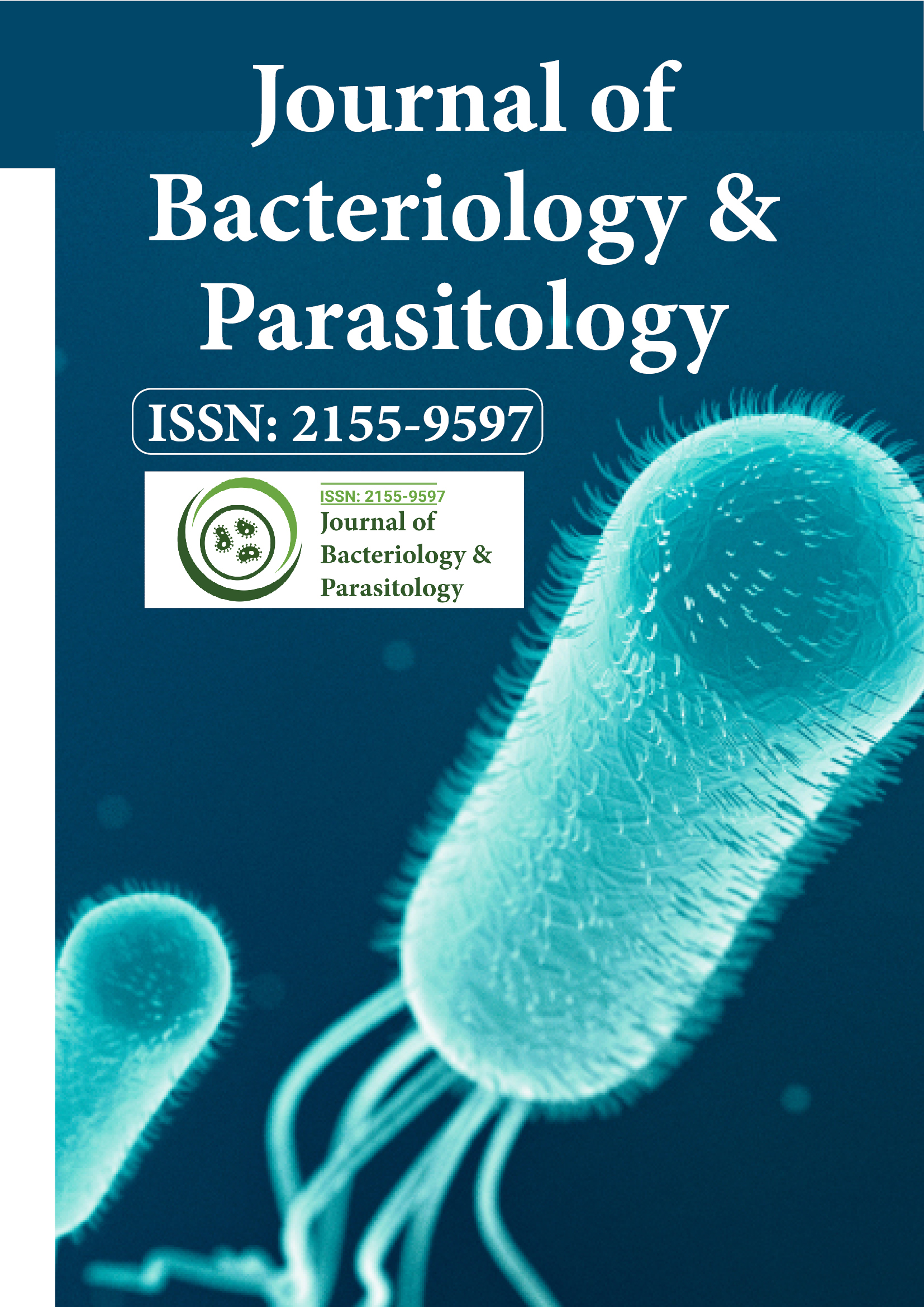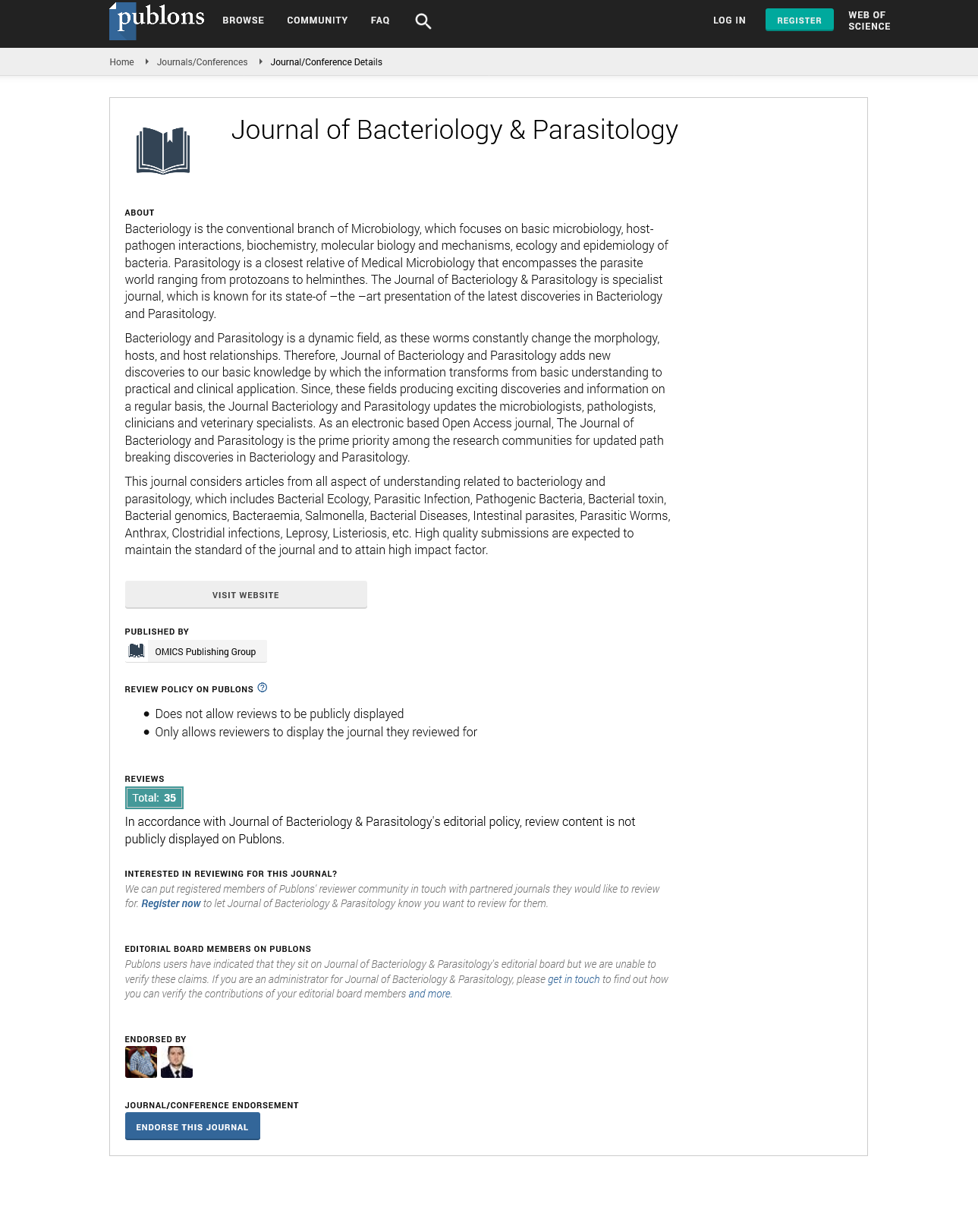Indexed In
- Open J Gate
- Genamics JournalSeek
- Academic Keys
- JournalTOCs
- ResearchBible
- Ulrich's Periodicals Directory
- Access to Global Online Research in Agriculture (AGORA)
- Electronic Journals Library
- RefSeek
- Hamdard University
- EBSCO A-Z
- OCLC- WorldCat
- SWB online catalog
- Virtual Library of Biology (vifabio)
- Publons
- MIAR
- Geneva Foundation for Medical Education and Research
- Euro Pub
- Google Scholar
Useful Links
Share This Page
Journal Flyer

Open Access Journals
- Agri and Aquaculture
- Biochemistry
- Bioinformatics & Systems Biology
- Business & Management
- Chemistry
- Clinical Sciences
- Engineering
- Food & Nutrition
- General Science
- Genetics & Molecular Biology
- Immunology & Microbiology
- Medical Sciences
- Neuroscience & Psychology
- Nursing & Health Care
- Pharmaceutical Sciences
Short Communication - (2025) Volume 16, Issue 2
Bacterial Biofilm Formation in Marine Environments: Impact on Aquatic Parasitic Load
Jia Li*Received: 24-Mar-2025, Manuscript No. JBP-25-29950; Editor assigned: 26-Mar-2025, Pre QC No. JBP-25-29950; Reviewed: 09-Apr-2025, QC No. JBP-25-29950; Revised: 16-Apr-2025, Manuscript No. JBP-25-29950; Published: 23-Apr-2025, DOI: 10.35248/2155-9597.25.16.544
Description
Bacterial biofilms represent assemblies of cells adhering to surfaces, encased in secreted polymers. In marine milieus, surfaces such as ship hulls, rocks, sediments, and shells host communities that grow resiliently over time. Biofilm formation alters micro environmental conditions oxygen levels decrease near attachment surfaces, nutrient gradients emerge, and waste products accumulate. These changes influence parasites that depend upon free-living bacterial prey or on specific environmental thresholds. Parasitic protozoa, helminths, and other microorganisms can increase in frequency where biofilms provide refuges or aggregate microbial food sources.
Investigations into biofilm growth under varying salinity and temperature conditions show that some bacterial species enhance production of extracellular polymeric substances when salinity is low, whereas others respond more strongly to nutrient enrichment [1-3]. Temperature shifts modulate metabolic rates; warmer waters accelerate growth, increasing thickness of the biofilm layer and reducing diffusion of oxygen. This creates micro-anaerobic pockets. Parasites that require aerobic bacterial prey suffer in deeper zones, while anaerobic or facultative parasites thrive.
In one coastal study, researchers sampled biofilms from submerged stones at three distances from shore: nearshore, midshore, offshore. Nearshore biofilms had denser bacterial populations and higher prevalence of trematode larvae. Midshore communities were intermediate. Offshore biofilms were thinner, with fewer parasites. The suggestion is that biofilm structure supports parasitic life cycles by stabilizing bacterial prey near hosts or vectors [4-7].
Another aspect involves interactions with chemistries in water that derive from pollution or agricultural runoff. Nutrient loading leads to eutrophication; high nitrogen and phosphorus promote bacterial blooms. Biofilms expand rapidly under such enrichment. Parasites that rely upon bacterial intermediates may thus increase in density, potentially raising infection risk for invertebrates and fish. Conversely, where pollutants include heavy metals, toxicity reduces bacterial diversity; this weakens parasite populations that require specific bacterial taxa.
Marine invertebrates such as mollusks and crustaceans often host parasites that have a life stage in sediment or on surfaces. When biofilms on shells or rigid structures harbor larvae, juvenile invertebrates may pick up infection simply by crawling over or grazing surfaces. Fish larvae may ingest biofilm fragments while feeding, ingesting parasite eggs or cysts. In aquaculture settings, biofilm management becomes essential for parasite control. Removal of surfaces, periodic cleaning, or treatment with appropriate antimicrobials helps reduce infection burden [8-10].
Laboratory experiments have tried to quantify the relationship between biofilm thickness and parasite survival. In controlled tanks, thicker biofilms correlated with higher numbers of protozoan cysts after fixed time intervals. Also, biofilms with mixed bacterial species often provided more stable environments for larval stages than monospecific biofilms. Functional diversity of bacteria nitrogen fixing, heterotrophic, phototrophic seems to generate micro-niches with variable pH, redox potential, and organic matter, which permit parasites to survive in dormant states until conditions improve.
Conclusion
There are implications for public health when coastal waters are used for recreation or fishing. Parasites introduced by livestock runoff, sewage, or wildlife can be maintained in biofilms and later transmitted to humans via shellfish or contaminated water. Monitoring water quality should include assessment not only of free-floating bacteria but also of sessile bacterial communities. Interventions might include designing surfaces that resist biofilm adhesion, employing periodic ultraviolet or chemical disinfection, and controlling nutrient input to limit bacterial growth.
References
- Naranjo Ortiz MA, Gabaldon T. Fungal evolution: diversity, taxonomy and phylogeny of the Fungi. Biol Rev. 2019;94(6):2101-2137.
[CrossRef] [Google Scholar] [PubMed]
- Kramer CL, Gregory PH. The Microbiology of the Atmosphere. Mycologia. 1974;66(2):384.
- Dey S, Veerendra GT, Babu PA, Manoj AP, Nagarjuna K. Degradation of plastics waste and its effects on biological ecosystems: A scientific analysis and comprehensive review. Biomed Mater Res. 2024;2(1):70-112.
- Hyde KD, Xu J, Rapior S, Jeewon R, Lumyong S, Niego AG, et al. The amazing potential of fungi: 50 ways we can exploit fungi industrially. Fungal Divers. 2019;97(2):1-36.
- Novak Babic M, Gunde Cimerman N, Vargha M, Tischner Z, Magyar D, Verissimo C, et al. Fungal contaminants in drinking water regulation? A tale of ecology, exposure, purification and clinical relevance. Int J Environ Res Public Health. 2017;14(6):636.
- Jay O. Helping the most vulnerable survive heatwaves today and in the future: Using physiology to identify cooling interventions that work. Physiol News Autumn 2022;4(3)29–33.
- Fenta L, Mekonnen H. Microbial biofungicides as a substitute for chemical fungicides in the control of phytopathogens: Current perspectives and research directions. Scientifica. 2024;2024(1):5322696.
[CrossRef] [Google Scholar] [PubMed]
- Magan N, Lacey J. Ecological determinants of mould growth in stored grain. Int J Food Microbiol. 1988;7(3):245-256.
[CrossRef] [Google Scholar] [PubMed]
- Moon HJ, Yoon YR. Investigation of physical characteristics of houses and occupants behavioural factors for mould infestation in residential buildings. Indoor Built Environ. 2010;19(1):57-64.
- Darwin C. The formation of vegetable mould, through the action of worms: With observations on their habits. 1881;8(2);22-36
Citation: Li J (2025). Bacterial Biofilm Formation in Marine Environments: Impact on Aquatic Parasitic Load. J Bacteriol Parasitol. 16:544.
Copyright: © 2025 Li J. This is an open-access article distributed under the terms of the Creative Commons Attribution License, which permits unrestricted use, distribution and reproduction in any medium, provided the original author and source are credited.

